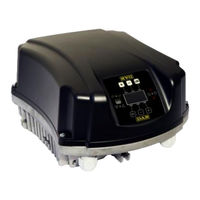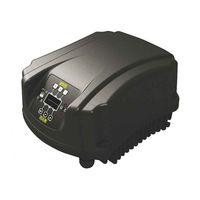DAB MCE-15/P Manuals
Manuals and User Guides for DAB MCE-15/P. We have 2 DAB MCE-15/P manuals available for free PDF download: Instructions Manual, Instruction For Installation And Maintenance
DAB MCE-15/P Instructions Manual (1024 pages)
Table of Contents
-
Italiano
3-
Legenda7
-
Collegamenti12
-
Menù25
-
Sensori32
-
Menù Utente41
-
Menù Monitor42
-
LA: Lingua42
-
Menù Manuale44
-
CF: Portante54
-
English
64-
Key68
-
Liability68
-
Warnings68
-
Applications69
-
Installation72
-
Connections73
-
Menus86
-
Flow Sensors93
-
Sensors93
-
User Menu101
-
LA: Language102
-
Monitor Menu102
-
VF: Flow Display102
-
Setpoint Menu103
-
Manual Menu104
-
Installer Menu105
-
VF: Flow Display105
-
Exchange Time113
-
AC: Acceleration114
-
Table 29: Alarms120
-
Default Settings123
-
-
Français
124-
Avertissements128
-
Légende128
-
Responsabilités128
-
Applications129
-
Généralités129
-
Installation132
-
Connexions133
-
Fixation Par Vis133
-
Menus146
-
Accès aux Menus147
-
Capteurs153
-
Menu Utilisateur161
-
LA : Langue162
-
Menu Afficheur162
-
Menu Manuel164
-
Temps D'échange173
-
CF : Portante174
-
Advertisement
DAB MCE-15/P Instruction For Installation And Maintenance (600 pages)
Table of Contents
-
Italiano
5-
Legenda
9 -
1 Generalita
10 -
-
Collegamenti12
-
-
-
-
-
Menù Utente35
-
-
Menù Monitor36
-
-
Menù Manuale38
-
-
-
-
-
CF: Portante49
-
-
-
English
59-
Warnings
63 -
Key
63 -
Liability
63 -
-
Connections66
-
-
-
Menus76
-
-
-
-
-
User Menu89
-
Monitor Menu90
-
Manual Menu92
-
-
-
Exchange Time103
-
AC: Acceleration103
-
-
-
-
Advertisement

